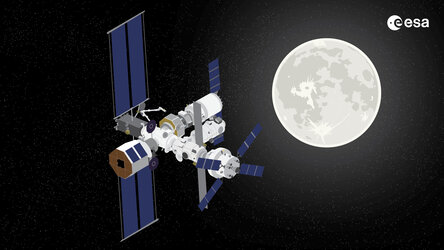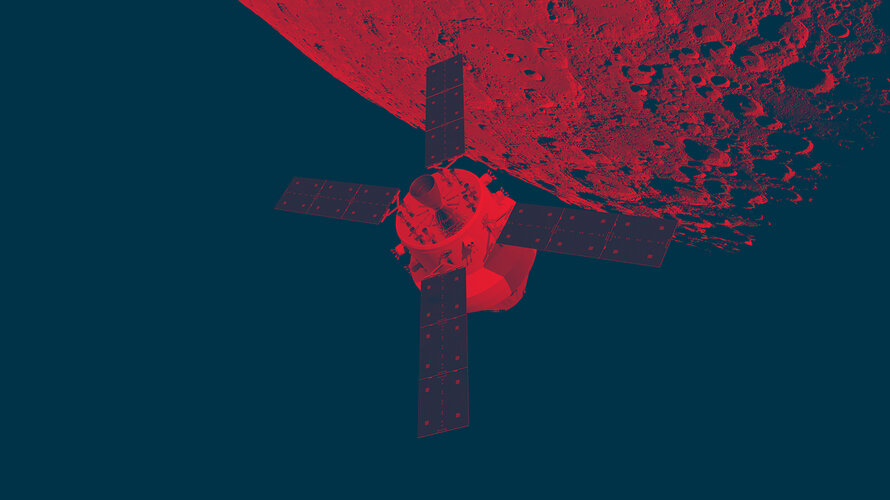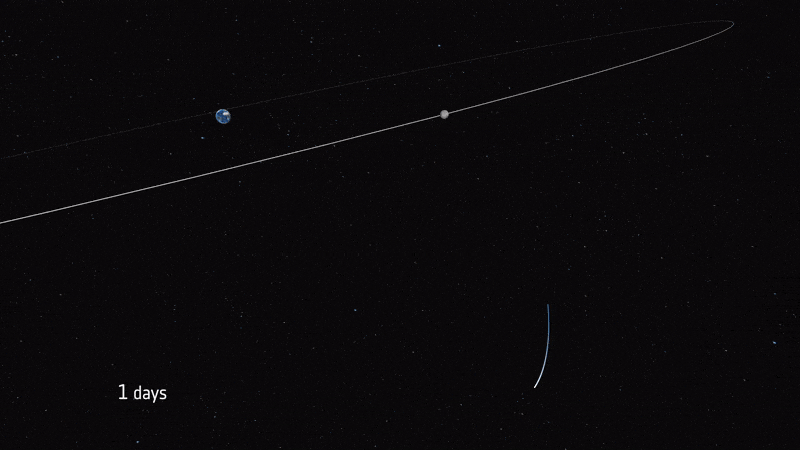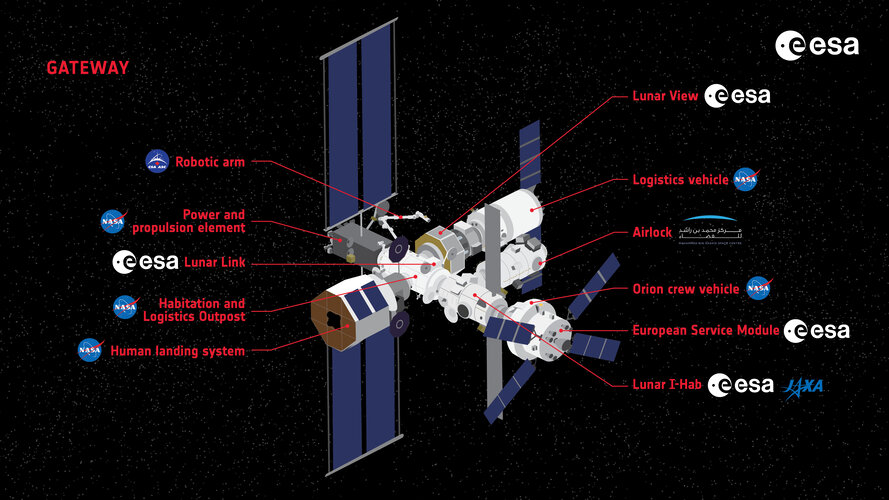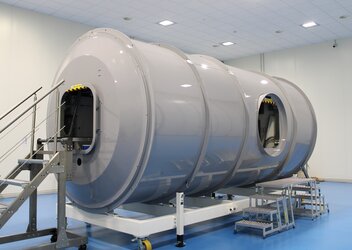Gateway: Lunar Link
Lunar Link is an ESA telecommunications element on the lunar Gateway, the new international space station that will orbit the Moon as part of the Artemis programme.

Lunar Link is a self-standing telecommunication element with its own computers, radio equipment and antennas. It will provide communication services between the Gateway and lunar rovers, landers and satellites on and around the Moon.
Two antennas will operate simultaneously and independently to maintain communications with multiple targets, an important feature as more and more astronauts, robots and satellites are expected to operate around the Moon in the next decades. The system will allow for high data speeds that can support live video transmission between the Moon and the Gateway, even when the station will be at the furthest point in its orbit, 70 000 km away from the lunar surface; depending on the distance, the system can even support streaming in high resolution from the Moon.

After a critical design review in 2023, Thales Alenia Space in France started building and testing Lunar Link, after which it will be delivered to NASA and integrated with their Habitation and Logistics Outpost (HALO) module. HALO, together with Lunar Link and NASA’s power and propulsion module PPE, will be the first elements of the Gateway, launching towards the Moon in 2026.
Quick facts

Launch: no earlier than 2027
Size: 2.5 m x 2.5 m
Antenna size: two dish antennas with a diameter of 125 cm, slightly larger than an average satellite dish antenna, plus two low gain antennas
Mass: 270 kg
Power consumption: up to 600W
Communication speed: from a few Kb/s up to 25 Mb/s depending on distance
Note: Lunar Link was previously known as ESPRIT HALO Lunar Communication System (HLCS).















 Germany
Germany
 Austria
Austria
 Belgium
Belgium
 Denmark
Denmark
 Spain
Spain
 Estonia
Estonia
 Finland
Finland
 France
France
 Greece
Greece
 Hungary
Hungary
 Ireland
Ireland
 Italy
Italy
 Luxembourg
Luxembourg
 Norway
Norway
 The Netherlands
The Netherlands
 Poland
Poland
 Portugal
Portugal
 Czechia
Czechia
 Romania
Romania
 United Kingdom
United Kingdom
 Slovenia
Slovenia
 Sweden
Sweden
 Switzerland
Switzerland



























